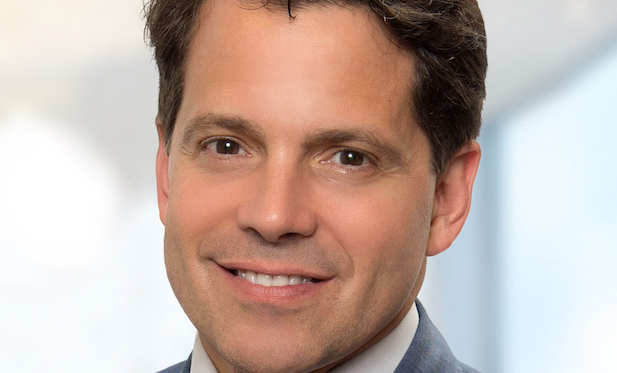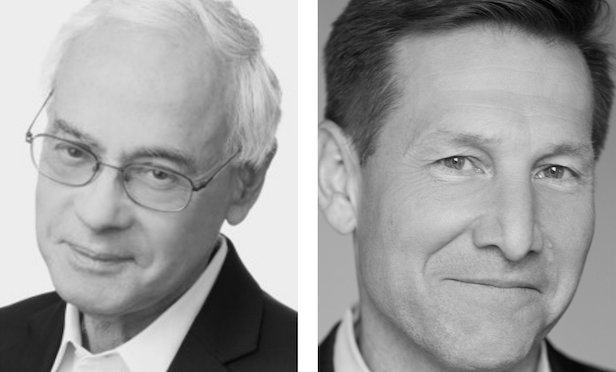 Anthony Scaramucci, founder and co-managing partner of SkyBridge Capital
Anthony Scaramucci, founder and co-managing partner of SkyBridge Capital
NEW YORK CITY—SkyBridge Capital, an alternative investment firm, and EJF Capital, a hedge fund and private equity manager, launched the SkyBridge-EJF Opportunity Zone REIT, calling it SOZ REIT for short. The real estate investment trust will invest in US Treasury-certified opportunity zones, which are low-income communities where investments of capital gains can receive preferential tax treatment.
“We want to offer up this product to people around the country, not just super rich people,” Anthony Scaramucci, founder and co-managing partner of SkyBridge, said on a conference call. The fund is looking to the mass affluent as investors. “Literally the dentists, doctors, lawyers, families around the United States.”
The fund began accepting capital from a small batch of clients and friends as of December 1. But on Tuesday, it officially opened to the public. The minimum investment in the private, non-exchange-traded REIT is $100,000.
Emanuel J. Friedman, founder and CEO of EJF Capital, on the call described the US opportunity zones as “the biggest regulatory change that I've ever seen in my lifetime.”
 From left: Emanuel J. Friedman and Neal Wilson
From left: Emanuel J. Friedman and Neal WilsonHe said, “The first thing people need to keep in mind is this is a very, very large program. Some people say $100 billion, $500 billion. This is going to be a trillion dollar program. This program is going to change America. It is going to change neighborhoods.” He asserted that opportunity zones comprise 12% of the entire US, are in every state and cover 10% of the population. He emphasized it was not only about real estate but also about jobs.
Saving money on taxes, boosting economies in different parts of the country, and engaging in forced savings are some benefits from the opportunity zones, according to Scaramucci. He said after doing extensive due diligence, SkyBridge chose to partner with EJF, comparing the process to selecting “the winners of a very large scale bakeoff.”
Showing a sense of humor, Scaramucci said no one in the private sector had a better understanding of opportunity zones than Friedman—then qualifying he wanted to rephrase what sounded “a bit Trumpian.” (Scaramucci had served as President Donald Trump's director of communications for 10 days, from July 21 to July 31, 2017.)
He highlighted EJF's experience in real estate as well as extensive relationships with banks.
Neal Wilson, co-founder and COO of EJF, stated community banks have less than $10 billion in assets. However, these banks represent between 40% and 50% of development loans made in the US. He added that the average community bank has approximately 7.5% of its loan portfolio in development projects at any given time compared to 1% to 1.5% for larger money center banks. Wilson said EJF works with a strong network of community banks.
Scaramucci explained the REIT structure provides diversity in property types, geographies and developers. It also allows for public investment and SOZ REIT plans to pay quarterly distributions. They hope to go public in about seven years which would allow for liquidity and an exit for investors. Scaramucci added that their partnership is one of the first movers in the space to use a REIT as opposed to a special purpose vehicle focused on one project.
Wilson recapped the opportunity zone tax benefits. First, they offer a deferral of taxes on capital gains. Private individuals and corporations with capital gains from the sale of any asset can defer taxation on an unlimited amount of realized gains until the end of 2026 if they reinvest the gain within 180 days in a Qualified Opportunity Fund.
Second, capital gain tax liabilities stemming from the sale proceeds are reduced by 15% if the investment is made before the end of 2019 and the investor holds onto the Qualified Opportunity Fund investment for seven years.
Third, If the investment is held longer than 10 years, the taxpayer will get a step up in basis in the interest in the Fund equal to the then fair market value.
Opportunity zones were conceived of during the Obama administration. But the current form of the law was passed as part of the Tax Cuts and Jobs Act of 2017.
© Touchpoint Markets, All Rights Reserved. Request academic re-use from www.copyright.com. All other uses, submit a request to [email protected]. For more inforrmation visit Asset & Logo Licensing.







